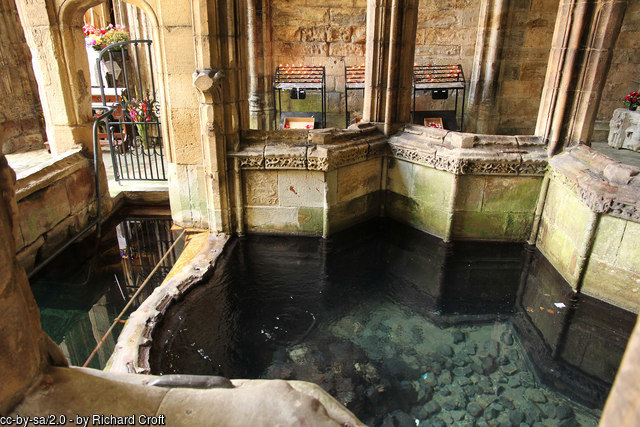Discover North Wales’ Unique Historical Places

Whenever we go on holiday or we are revisiting a holiday destination we’re always stumped on unique and original things to do, and to experience something we haven’t before. Whether you enjoy the great outdoors or fancy a history trip around North Wales there are few unconventional places of the beaten track that you should visit whilst you are here.
Winifred’s Well
Winifred’s Well, or St. Winifride’s Well, is one of the many holy wells scattered across Europe, giving the town its name Holywell. Deriving from a supposedly gruesome beheading, the well has many faithful visitors. The story revolves around Winifred, the daughter of a wealthy Welsh citizen, who was romantically pursued by a man named Caradog. Rejecting the man’s advances, the young woman’s head was lopped off. But, it was said that when her head fell, a natural spring sprung instantly. After, the well was visited by pilgrims who said the natural spring had miraculous healing powers and could provide many ailments. Ever since then, the pilgrimage to the well has been unbroken since its existence and many pilgrims still make the visit to the well for its healing waters today.
The 16th century medieval structure features a chapel that covers the well’s waters and a shallow wading pool in the courtyard which is also filled with the wells healing waters which allows visitors to bath in. This peaceful site offers relaxation which may be even more healing than the magic waters.
Laburnum Arch
Visit the Laburnum Arch and experience this exquisite floral tunnel bursting with golden flowers which drape downward over the arch to create a magnificent tunnel.
This 180ft long archway is said to be the longest in Britain and is situated in Bodnant Garden, both which were created by Henry Davis Porchin. Offering an enchanting passageway for visitors the delicate blossoms provide a pop of colour to Wales’ often wet scenery. Known as “Golden Rain”, when in bloom, the flowers cascade down the branches like dainty pearls.
Visit this fairytale forest between May and June where you will see the arch at its full potential.
Din Lligwy
Visit the Isle of Anglesey and experience these stone-built haunting ruins belonging to the ancient village dating back from the Roman-British period, an excellent example of a fortified hut group.
Situated in a wooded grove of trees, the once lived in settlements gave inhabitants a clear view of the bay, which they lent most of their lives to invading Romans. An excavation in the early 20th century revealed coins and other artifacts dated between the 3rd and 4th century, however, there is evidence to suggest that the huts were lived in before that time.
With a variety of different buildings the settlements including smelting hearths and iron slag the site suggests that it was used for metalworking. Other sites from the Neolithic era (the Lligwy tomb) and the Medieval period (Hen Capel Lligwy) of Anglesey, are within easy walking distance making this one amazing history trip.
Pool Park Asylum
Situated near Ruthin, this Pool Park Asylum has been abandoned since 1990. The damp, dilapidated and deathly silent asylum was once a deer hunting ground for nearby Ruthin Castle which was since then passed between various wealthy landowners. The mock-Tudor style manor house that still stands today was constructed in 1862 and was sold to the North Wales Counties Mental Hospital, which acted as an overflow from Denbigh’s Insane Asylum. For a brief amount of time the manor even acted as a prisoner of war camp in World War II.
Today, the manor sees rotting wood and water damage, however, there still remains a beautiful old staircase which spills down into a grand entrance hall. The debris adds to the charm of this abandoned site and is well worth a visit.


